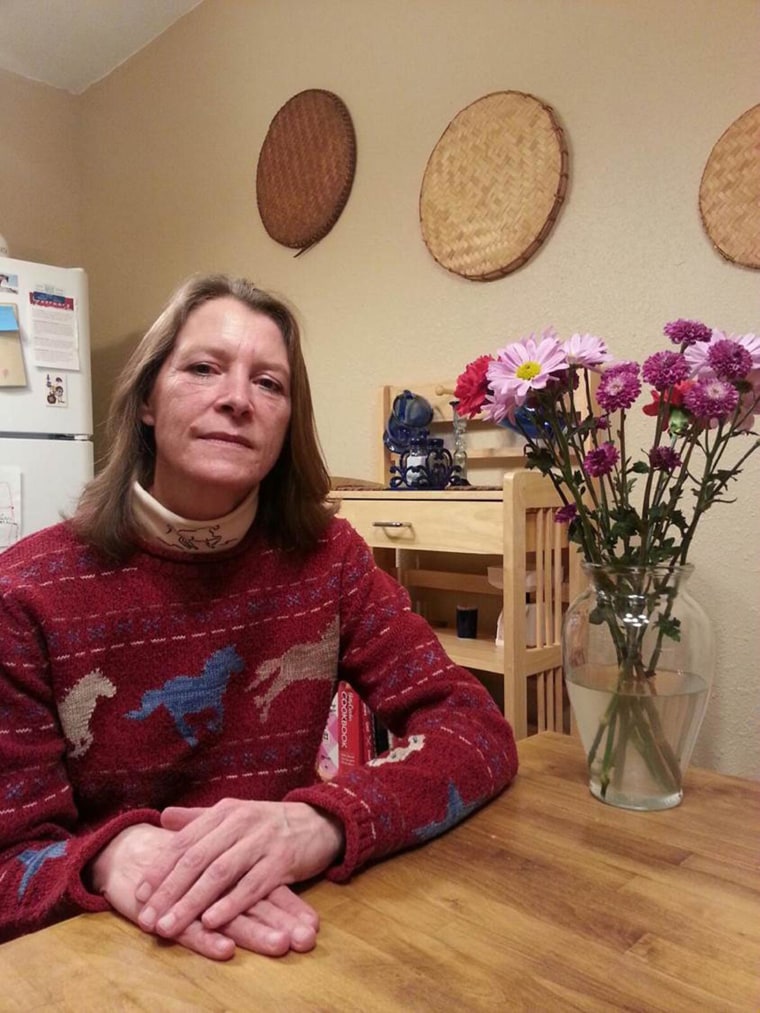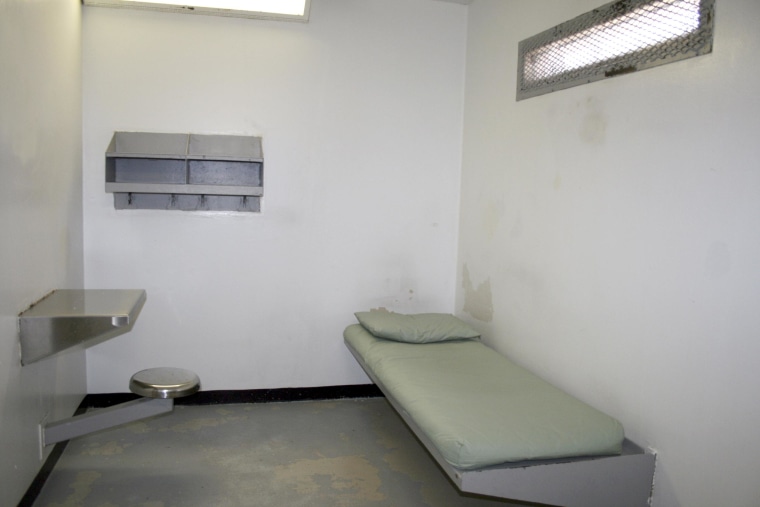In the small, dark world of solitary confinement, an inmate's basic needs can go neglected for months — and many are starting to wonder for what purpose.
For Jan Green, 52, who spent eight months sleeping on a thin mat on the floor of a New Mexico jail cell about 7 feet wide and 7 feet long, being in isolation meant no access to basic necessities like sanitary napkins. It meant no exercise, no human contact, no medicine, and barely any running water.
"I had a metal toilet and sink, and couldn't get the water to work properly, so I rarely could wash my hands or get a drink of water or brush my teeth," said Green, who landed behind bars on domestic violence charges — charges that were ultimately dismissed.

Green was in solitary confinement at the Valencia County Detention Center in Los Lunas, N.M., where she says a nurse failed to report her psychiatric problems and corrections officers refused to give her any time out of her single-window cement block, day after day. (Standard treatment for solitary inmates includes one to two hours each day outside of their cells.)
Last month, Green, who has been out of jail since February 2012, settled a lawsuit with Valencia County for $1.6 million. Diagnosed with bipolar disorder before her arrest, she said her time in solitary pushed her into a state of psychosis that still haunts her from time to time, despite receiving treatment after getting out.
"It's kind of wormed its way into all aspects of life," said Green, who now lives in Minnesota with her daughter. "It's a daily struggle."
Solitary confinement, and its long-term effects on inmates, have pushed to the front of the nation's conscience in recent weeks. The questionable treatment that inmates are forced to endure for days, months, years or even decades while in solitary, not to mention its high financial cost, have come under fire, as has its effectiveness: Advocates argue it actually increases rates of recidivism for those released back into society.
It's unclear how many inmates in the U.S. are being held in solitary confinement, partially because detention centers don't always share those statistics. But experts estimate the number is somewhere around 80,000. The cost to house an inmate in solitary ranges from state to state, but it typically ranges between $70,000 and $80,000 per year — significantly more than it costs to house someone in a prison's general population.
Sen. Dick Durbin, D-Ill., who leads the Senate Subcommittee on the Constitution, Civil Rights and Human Rights, announced in early February that the Federal Bureau of Prisons will conduct its first-ever review of the use of solitary confinement in federal prisons across the nation. On Tuesday, he held a Senate Judiciary hearing on solitary confinement, calling for tighter rules on how long juveniles, pregnant women, and the mentally ill could be held in solitary.
The move follows states conducting their own assessments of whether solitary is overused in state-run detention centers. New York state was the most recent to enact changes, two weeks ago becoming the largest prison system to curb solitary confinement for vulnerable inmates such as those who are pregnant or mentally ill, and set limits on the maximum amount of time inmates could be in solitary.
"The trend right now is to recognize that solitary is both an economically wasteful and harmful method for prisons to operate."
Many other places, including Maine, Connecticut, Illinois, Texas and Mississippi, have revamped or reformed their solitary confinement policies in recent years. California, which has high levels of prisoners in solitary, may be the next battleground: A case brought by the Center for Constitutional Rights, a human rights organization, against the state for its use of prolonged solitary confinement in the notorious Pelican Bay prison will go to trial in November.
"The trend right now is to recognize that solitary is both an economically wasteful and harmful method for prisons to operate," said Jules Lobel, president of the Center for Constitutional Rights and a professor at the University of Pittsburgh.
Colorado, too, is looking to drastically reduce or entirely eliminate the use of solitary confinement, especially for mentally ill inmates — who comprise at least a third to a half of those held in isolation nationwide, according to David Fathi, the director of the American Civil Liberties Union National Prison Project. Rich Raemisch, the new executive director of the Colorado Department of Corrections, recently spent 20 grueling hours in a solitary cell to get a better understanding of it, and left with "even more urgency for reform."
The agonizing experience is hard for anyone, but for the mentally ill, it can be deadly.
"They suffer tremendously and break down and get worse, and often commit suicide when they're subjected to the stress of solitary confinement," Fathi said.
More than 95 percent of those held in solitary — mentally ill or not — are eventually released back into their communities. Fathi cited a Washington state prison study that found solitary confinement had higher recidivism rates than comparable prisoners who hadn't been held in solitary.
"It doesn't make people better," he said.
While most advocates say a very, very small percentage of inmates are truly too dangerous not to be in solitary — Colorado's Raemisch testified on Tuesday that he thought out of his state's entire prison system, he believed four people belonged in isolation — they believe there are alternatives.
One option for punishment is taking away privileges, said Peggy McGarry, director of the Center on Sentencing and Corrections at VERA Institute of Justice, a nonpartisan non-profit research and technical assistance organization.
"You can't go the dining hall to go to the meals and see your friends. Your meal will be served in your cell for a week. Or you're not allowed to have that family visit that was planned two weeks from now. Or your library time is being taken away for a period of time," she said.
She also proposed just using solitary as a timeout - less than 24 hours - which is done in other countries, such as Germany, which uses solitary sparingly and for no more than 8 hours at a time.
Green, the woman held in solitary in New Mexico, hopes it's abolished entirely.
"I don't think it's healthy for anybody to sit in a little cell and depend on the guards for their every need and just have hour upon hour of silence. Your mind does terrible things when you're in there," she said. "It was miserable."
